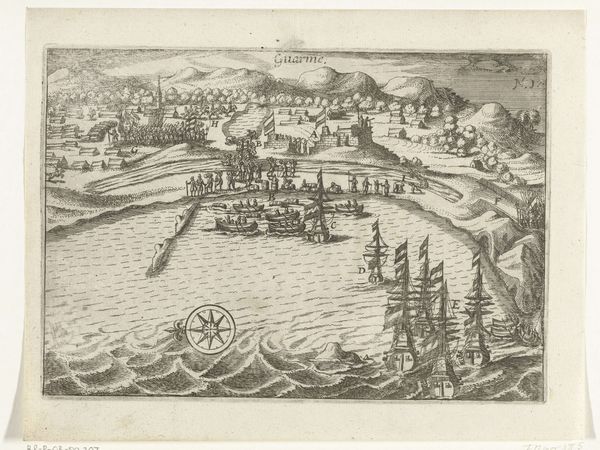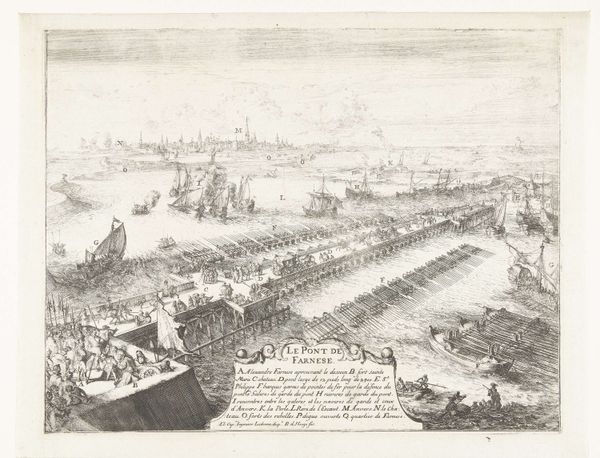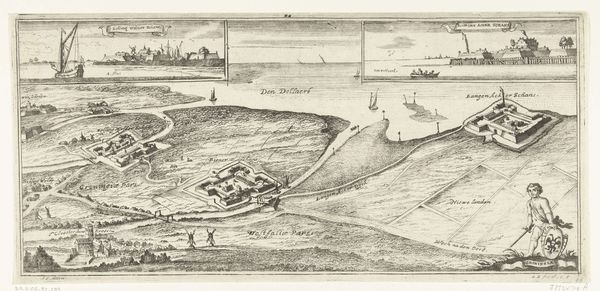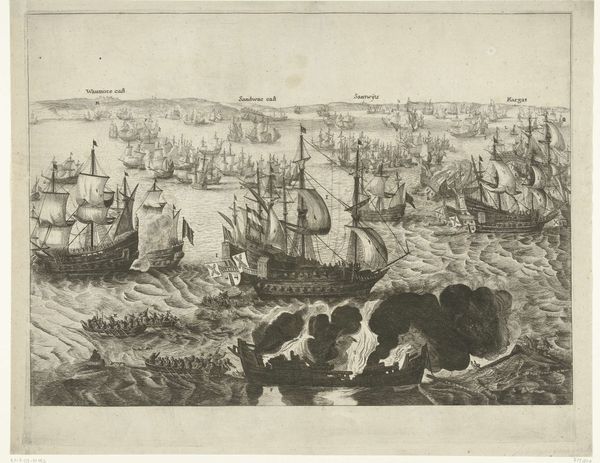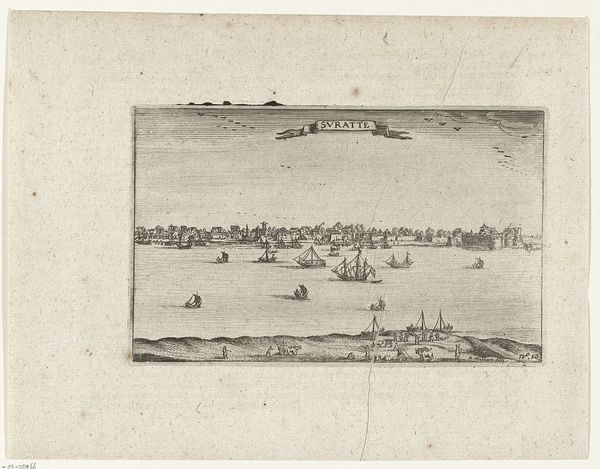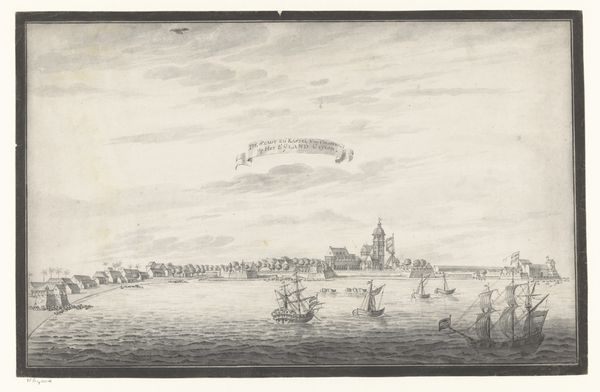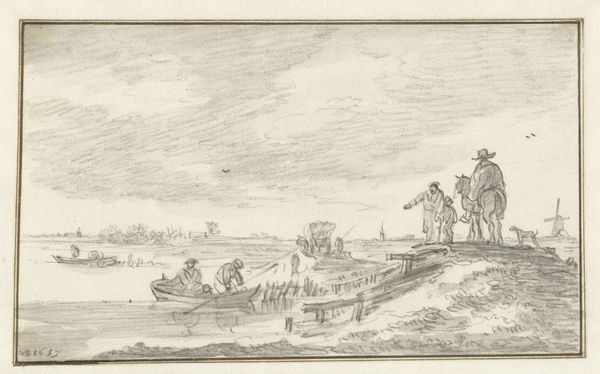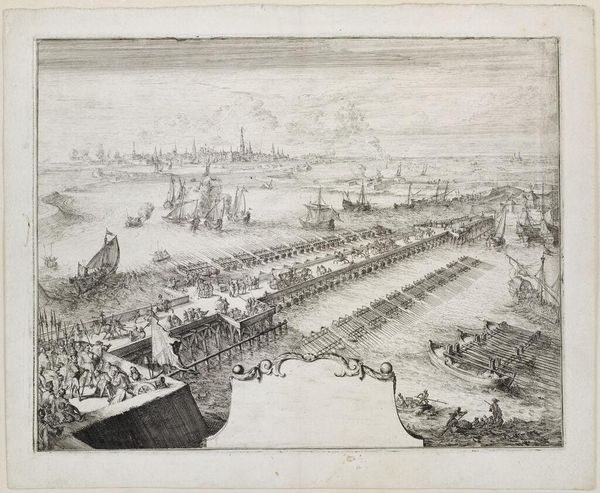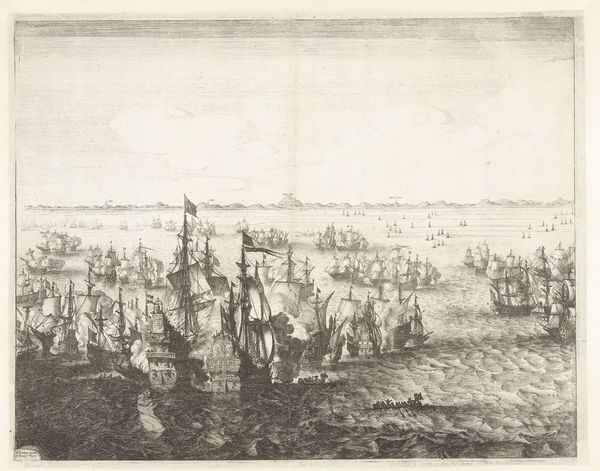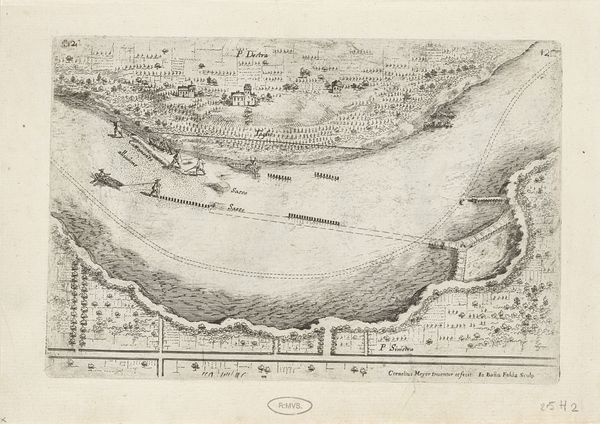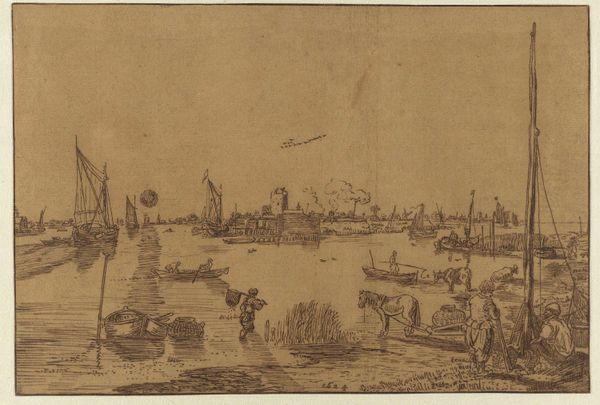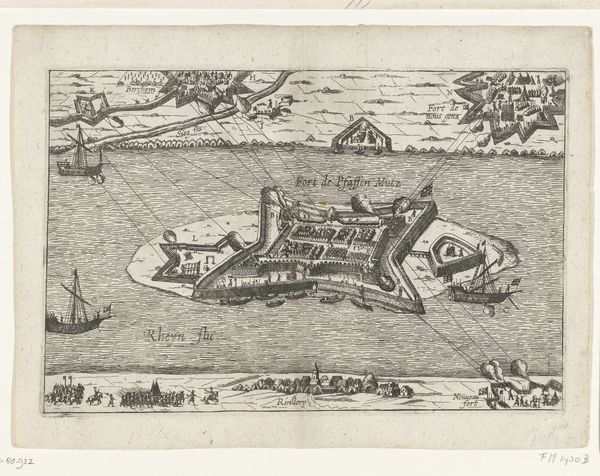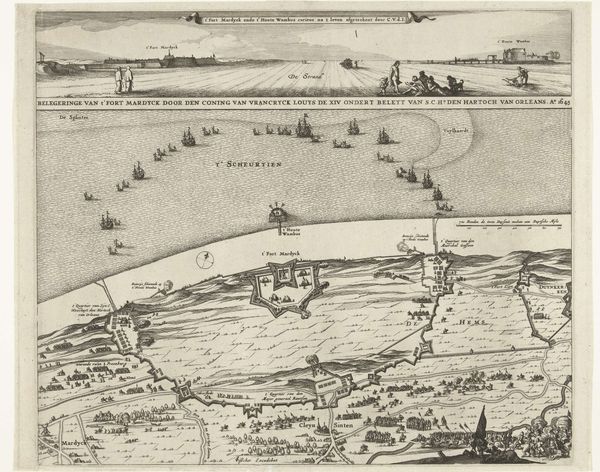
print, ink, engraving
# print
#
old engraving style
#
landscape
#
ink
#
cityscape
#
history-painting
#
engraving
Dimensions: height 138 mm, width 498 mm
Copyright: Rijks Museum: Open Domain
Nicolas Cochin created this print of Mardijk in 1645 using etching, a printmaking technique which relies on acid to bite lines into a metal plate. The relatively inexpensive process of etching made prints like this one accessible to a wide audience. Note the precise lines and the immense detail of the landscape, from the military figures to the ships at sea. These details offer a fascinating glimpse into the 17th century, but the print also speaks volumes about the labor involved in its creation. Cochin would have first coated a metal plate with wax, then carefully scratched away the wax to reveal the lines of his design. The plate was then submerged in acid, which ate into the exposed metal. The longer the plate remained in the acid, the deeper the lines would become, which would then hold ink and create the final print. Understanding this intensive process allows us to appreciate the artistry of Cochin and the societal value placed on images of this kind.
Comments
No comments
Be the first to comment and join the conversation on the ultimate creative platform.
